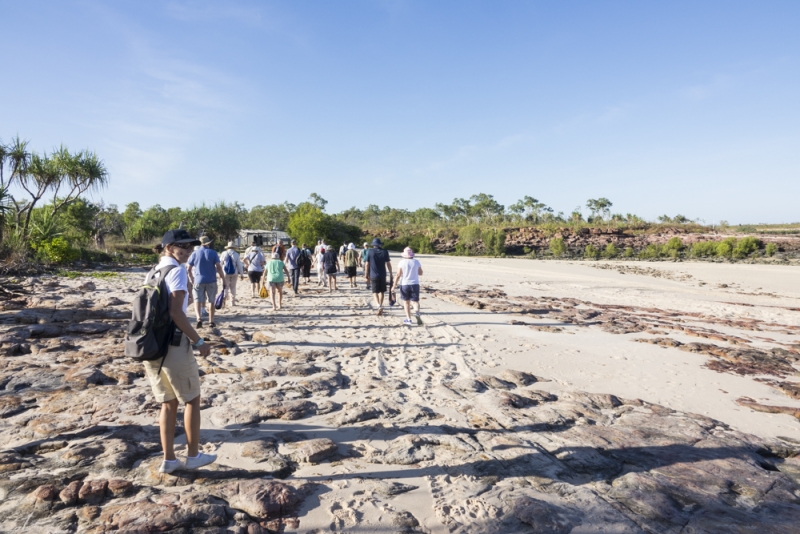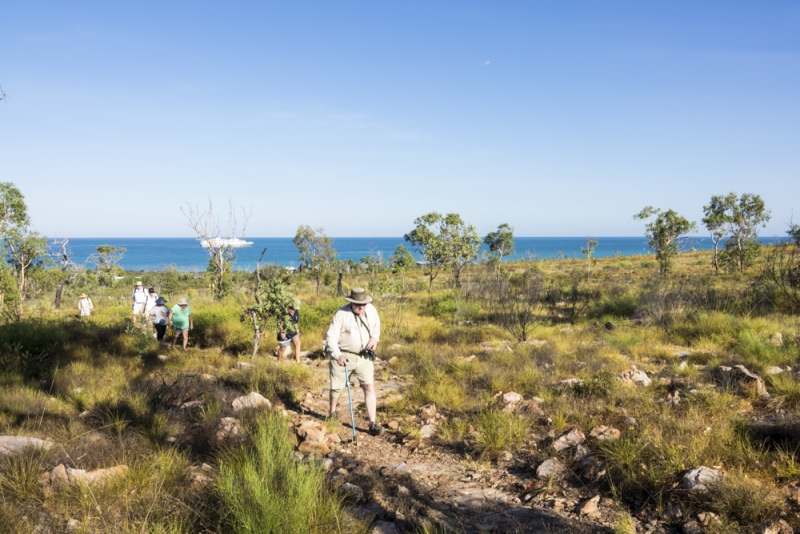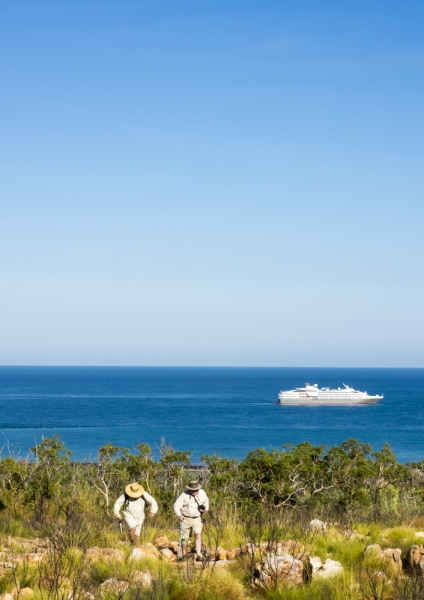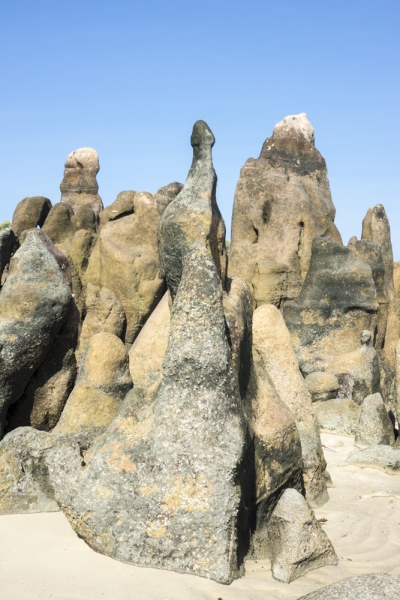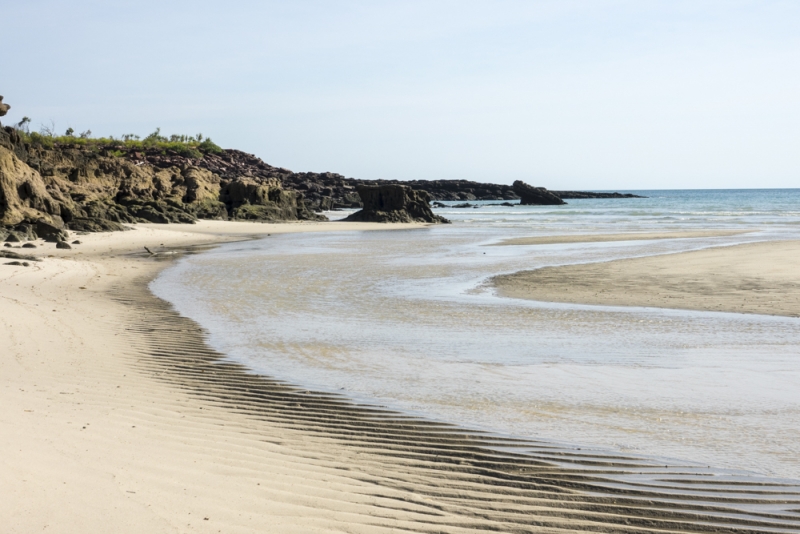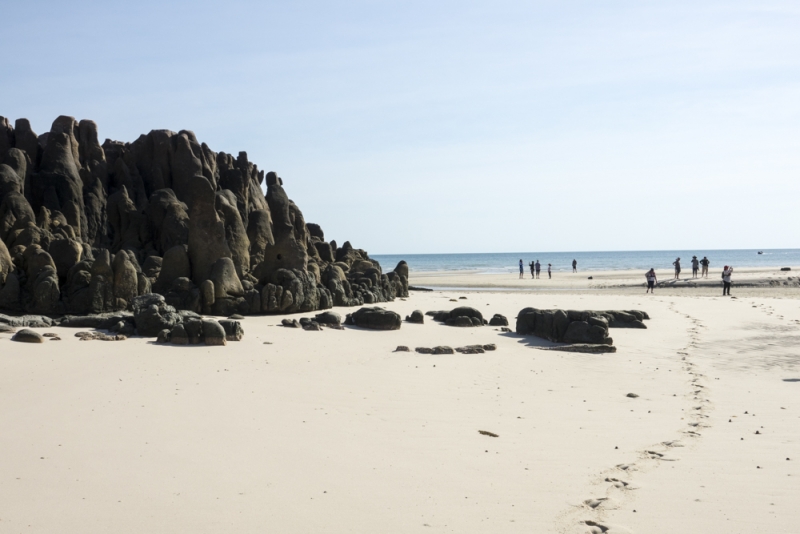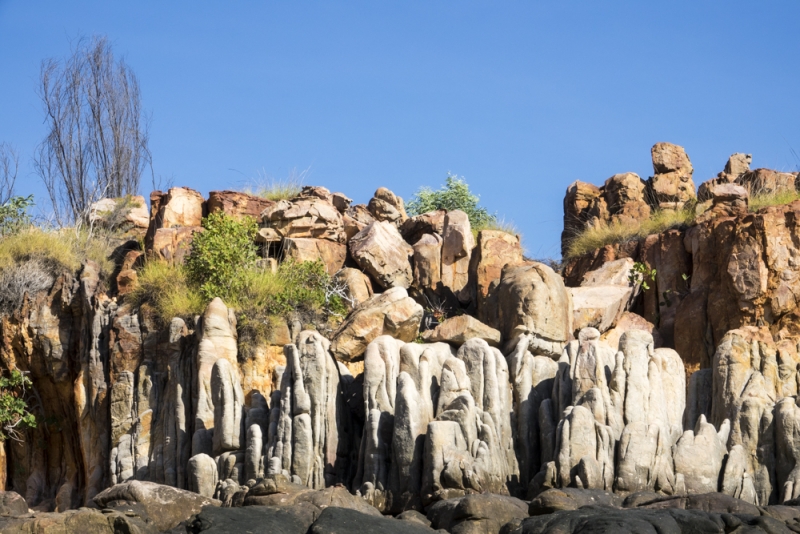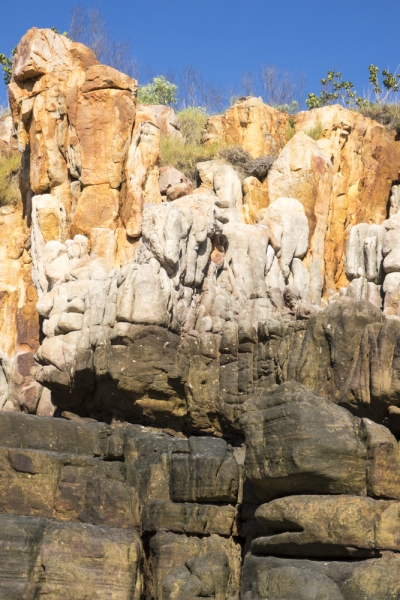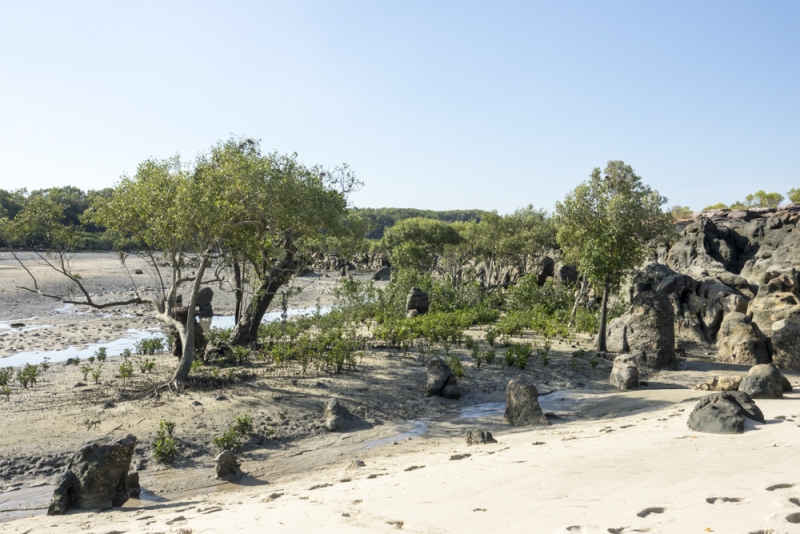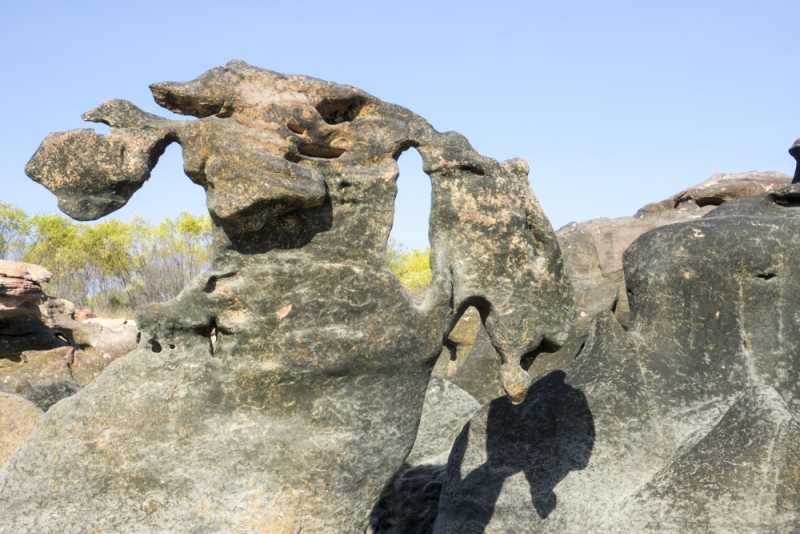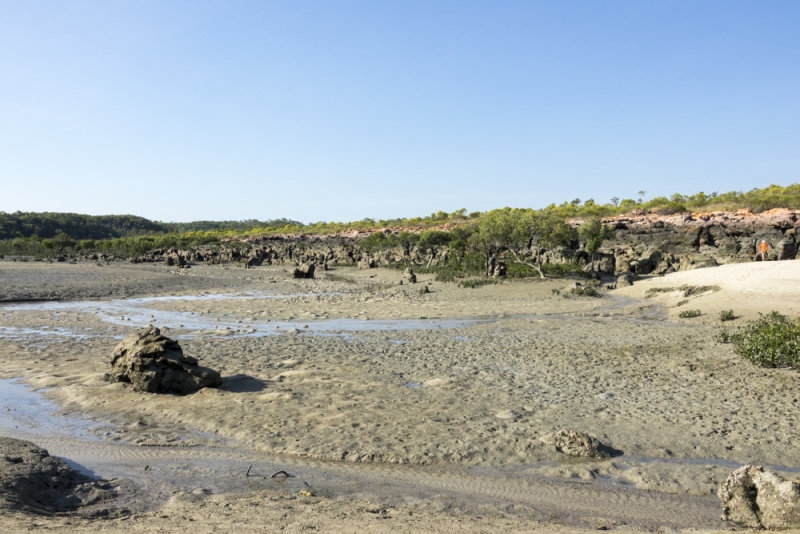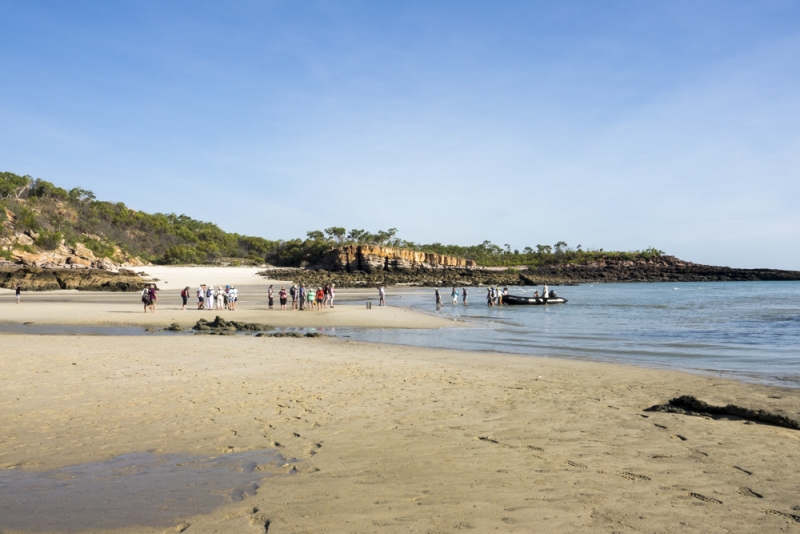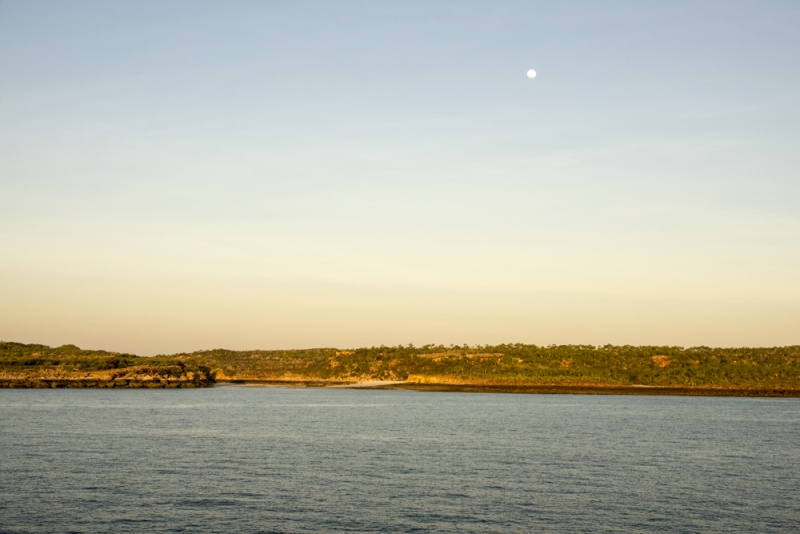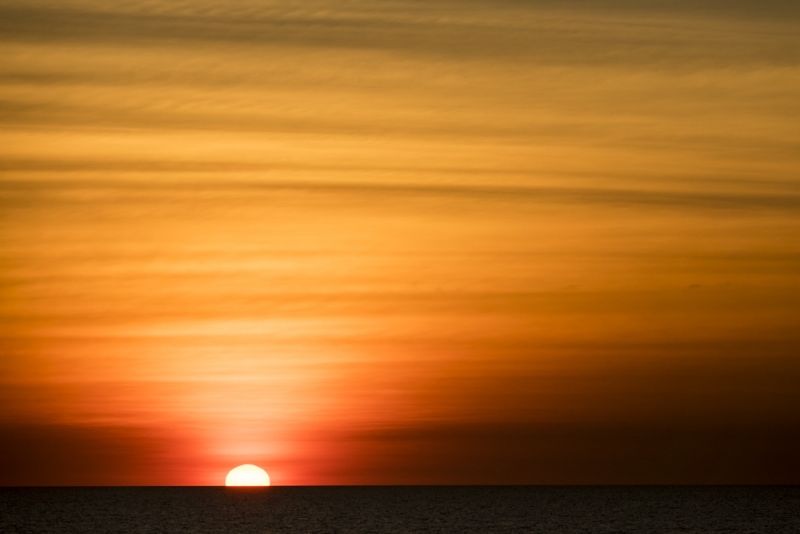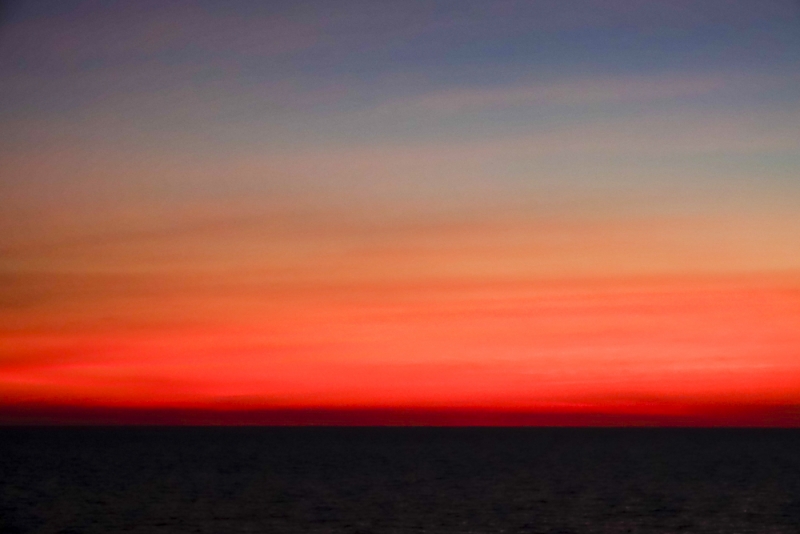L’Austral has repositioned this morning to Freshwater Cove, home to a Wandjina rock art gallery. It is a wet landing onto the beach, where we are greeted by members of the local Worrorra tribe, who know this area as “Widgingarra Butt Butt”. The Wandjina is their supreme deity and the basis for their belief system.
Freshwater Cove is the only place on our itinerary that has a small settlement, which in this case is only an open-air art gallery for the local artists to sell their work.I am in the first group departing at 7 am, which is a good thing as it is set to be another mid-30s day of clear blue skies and sunny conditions. After the ‘Welcome to Country’ ceremony (ochre marks on each cheek), it is a slow 40 minute uphill walk over rocky terrain with a bit of scrambling to get down to the gallery at the end. This rock art gallery is quite different from the Gwion Gwion galleries yesterday – the Wandjina images are not human depictions, but of sacred animals (owls) and the white-faced mouthless Wandjina themselves. This gallery has fish, stingrays, turtles and depictions of whirlpools or cyclones, some of which have been refreshed based on the whiteness of the ochre. The art of the Worrorra, Ngarinyin and Wunambal tribes became more widely known at this year’s Vivid Festival in Sydney, which featured images of the Wandjina depicted on the Sydney Opera House.
In the afternoon, L’Austral repositions 3 nautical miles from Freshwater Cove to Langgi Bay, at the entrance to a tidal estuary. Sacred to the local tribes, at low tide, it reveals an amazing series of geological formations, shaped by the ebb and flow of the substantial tidal system. The tribal beliefs are that the formations are their drowned ancestors, punished in retribution by the angry Wandjina gods. The story goes that two small boys are told left under a tree by their father and told not to tease or play with the owl resting in the tree above them, as it is the son of the Wandjina. The older boy convinces his brother to climb the tree and bring the owl down. They pull out some of the owl’s feathers, poke it with grass, and throw the owl up in the air, commanding it to fly away if it is indeed the son of the gods. After the third throw, the owl flies up into the clouds to join the Wandjina. As punishment, the Wandjina sends a huge flood, which drowns all of the tribes, with the exception of two small children, a brother, and a sister. The rock formations at Langgi represent these drowned ancestors as a reminder to obey the laws of the Wandjina. Some of the formations look human in form, others in the shape of elephants and seahorses.
As we head to our next destination in the Lacepede Islands, we are treated to the rising of the almost full moon, and a spectacular sunset.
